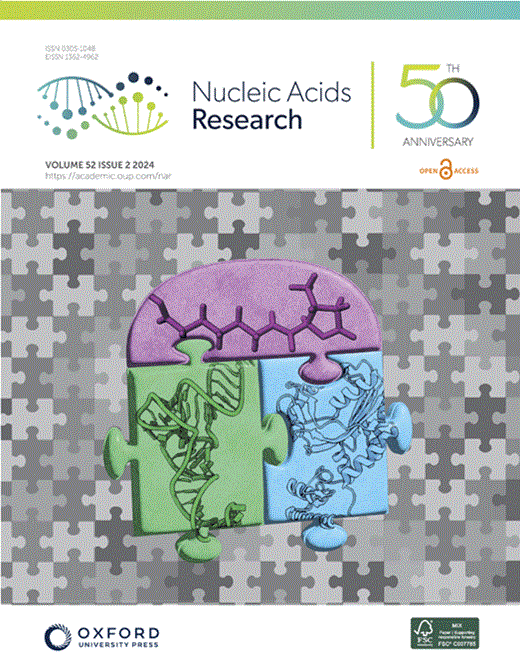canSAR 2024--更新公共药物发现知识库
IF 16.6
2区 生物学
Q1 BIOCHEMISTRY & MOLECULAR BIOLOGY
引用次数: 0
摘要
canSAR (https://cansar.ai) 仍然是癌症药物发现和转化研究领域最大的公开平台。它整合了来自不同公共数据来源的多学科数据,以及专门为 canSAR 策划的数据。此外,canSAR 还部署了一套整理和标准化工具以及人工智能算法,以便从这些集成数据中生成新知识,为假设的生成提供信息。我们在此报告 canSAR 的最新更新。在增加可用数据的同时,我们还对算法进行了改进,以便更好地为用户提供服务。值得注意的是,我们的增强功能包括利用正向无标记学习(Positive Unlabeled Learning)的配伍性分类器,该分类器在整个口袋组中找到的配伍机会是原来的两倍。本文章由计算机程序翻译,如有差异,请以英文原文为准。
canSAR 2024—an update to the public drug discovery knowledgebase
canSAR (https://cansar.ai) continues to serve as the largest publicly available platform for cancer-focused drug discovery and translational research. It integrates multidisciplinary data from disparate and otherwise siloed public data sources as well as data curated uniquely for canSAR. In addition, canSAR deploys a suite of curation and standardization tools together with AI algorithms to generate new knowledge from these integrated data to inform hypothesis generation. Here we report the latest updates to canSAR. As well as increasing available data, we provide enhancements to our algorithms to improve the offering to the user. Notably, our enhancements include a revised ligandability classifier leveraging Positive Unlabeled Learning that finds twice as many ligandable opportunities across the pocketome, and our revised chemical standardization pipeline and hierarchy better enables the aggregation of structurally related molecular records.
求助全文
通过发布文献求助,成功后即可免费获取论文全文。
去求助
来源期刊

Nucleic Acids Research
生物-生化与分子生物学
CiteScore
27.10
自引率
4.70%
发文量
1057
审稿时长
2 months
期刊介绍:
Nucleic Acids Research (NAR) is a scientific journal that publishes research on various aspects of nucleic acids and proteins involved in nucleic acid metabolism and interactions. It covers areas such as chemistry and synthetic biology, computational biology, gene regulation, chromatin and epigenetics, genome integrity, repair and replication, genomics, molecular biology, nucleic acid enzymes, RNA, and structural biology. The journal also includes a Survey and Summary section for brief reviews. Additionally, each year, the first issue is dedicated to biological databases, and an issue in July focuses on web-based software resources for the biological community. Nucleic Acids Research is indexed by several services including Abstracts on Hygiene and Communicable Diseases, Animal Breeding Abstracts, Agricultural Engineering Abstracts, Agbiotech News and Information, BIOSIS Previews, CAB Abstracts, and EMBASE.
 求助内容:
求助内容: 应助结果提醒方式:
应助结果提醒方式:


